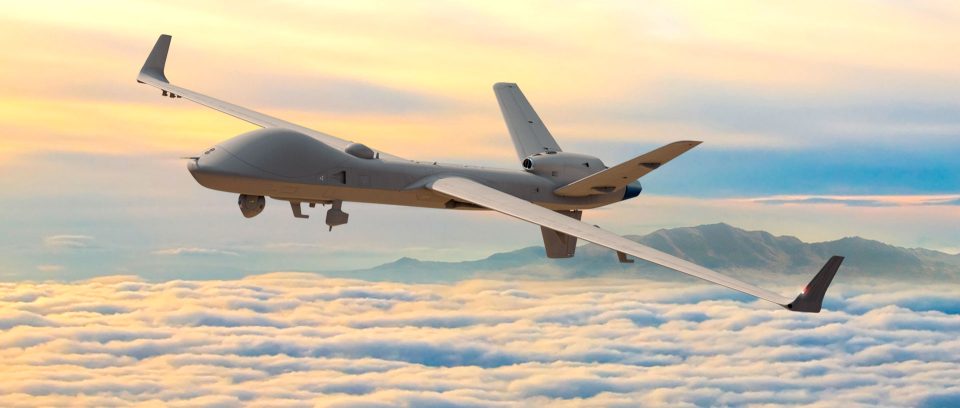
Explained: How the MQ-9B drone deal will benefit India

In a joint statement issued last week following discussions between U.S. President Joe Biden and Prime Minister Narendra Modi, it was announced that India intends to acquire General Atomics MQ-9B High Altitude Long Endurance (HALE) Unmanned Aerial Vehicles (UAVs).
The MQ-9B drones are set to be assembled in India giving the country a fillip in terms of Intelligence, Surveillance, and Reconnaissance (ISR) capabilities. The deal will help offset the advantage Pakistan and China have with Turkish made Bayraktar TB2 and Wing Loong 3 armed drones.
The drones will help secure Indian air space and act as “eyes in the sky” complementing the Air Force’s Phalcon Airborne early warning and control systems (AWACS), and Netra Airborne Early Warning and Control System (AEW&CS) planes.
How many drones is India procuring?
India is looking at procuring 31 armed UAVs, including 15 SeaGuardian versions for the Indian Navy and 16 SkyGuardian versions – eight for both the Indian Army and Air Force.
Also Read: Defence self-reliance Modi-style: Born in America, assembled in India
Where will they be assembled and maintained?
The Navy already operates two MQ-9A drones on lease from General Atomics, which claims the drones in Indian service have flown more than 10,000 flight hours over a period of two years, covering 14 million square miles of area.
As a part of the initiative, General Atomics will also establish a Comprehensive Global Maintenance, Repair, and Overhaul (MRO) facility in India to help maintain the drones.
How much is the deal worth?
The estimated value of the deal is approximately $3.5 billion, which is equivalent to nearly Rs 29,000 crore, although the Indian government says the exact cost is yet to be finalised.
How much of the content will be indigenous?
The present proportion of indigenous content suggested in the MQ-9B agreement is around 8-9%. However, India is aiming to raise this figure to approximately 15-20%, and talks are currently underway.
General Atomics has been favourable to the idea of technology transfer, but the final decision is up to the US government.
Also Read: MoD trashes social media reports on drone price, says yet to be finalised
What are the capabilities of the MQ-9B?
The MQ-9 is an upgraded version of the General Atomics MQ-1 Predator utilising the same ground control systems as its predecessor.
The drone is equipped with a 950-shaft-horsepower (712 kW) turboprop engine (compared to the MQ-1 Predator’s 115 hp (86 kW) piston engine). This ensures a significant enhancement in capabilities.
The SkyGuardian and the SeaGuardian MQ-9B drones can carry 15 times more ordnance payload and cruise at approximately three times the speed of its predecessor – MQ-1 Predator.
What missions can it perform?
The MQ-9B SkyGuardian and SeaGuardian are highly versatile UAVs capable of executing a diverse range of missions including humanitarian assistance, disaster relief, search and rescue operations, law enforcement activities, border enforcement, defensive counter air measures, airborne early warning tasks, and electronic warfare operations.
The MQ-9B can also perform anti-surface warfare (by launching stand-off missiles like Hellfire), anti-submarine warfare (by dropping sonobuoys), airborne mine countermeasures (by using sonar to detect mines) as well as long-range strategic intelligence, surveillance, and reconnaissance (ISR) gathering missions using its Lynx Multi-mode Radar.
Over-the-horizon targeting missions can also be performed using satellite link.
What is its range and Payload?
The drone is equipped with a total of nine hardpoints, with eight located on the wings and one on the centreline. These hardpoints have a maximum external payload capacity of 2,155 kg including fuel and weapons.
The MQ-9B is designed to operate over the horizon through satellite connectivity, enabling it to fly for more than 30 hours (duration may vary depending on configuration) in various weather conditions.
Also Read: Modi’s visit and India’s mega defence deals
What weapons can be carried?
The MQ-9B is capable of carrying a range of weapons.
The drone can conduct precision guided ground bombing with GBU-12 Paveway II laser-guided bombs and GBU-38 Joint Direct Attack Munition (JDAM) kits. It can also target armoured ground forces or undertake precision strikes with missiles like Hellfire.
AIM-9 sidewinder missiles and AIM-92 Stinger air-to-air missiles can be used to engage helicopters, UAVs and other airborne targets.
Deployment and service
The MQ-9 series of drones have been extensively deployed by the US forces and allies over Afghanistan, Iraq, Yemen and Libya.
The Houthis claim they managed to shoot down three drones whereas either Libyan troops or Russian sponsored Wagner mercenaries allegedly used a Pantsir air defence system to jam and shoot down one MQ-9A drone.
A US-operated MQ-9B drone was lost in a collision with a Russian Su-27 in March this year.


